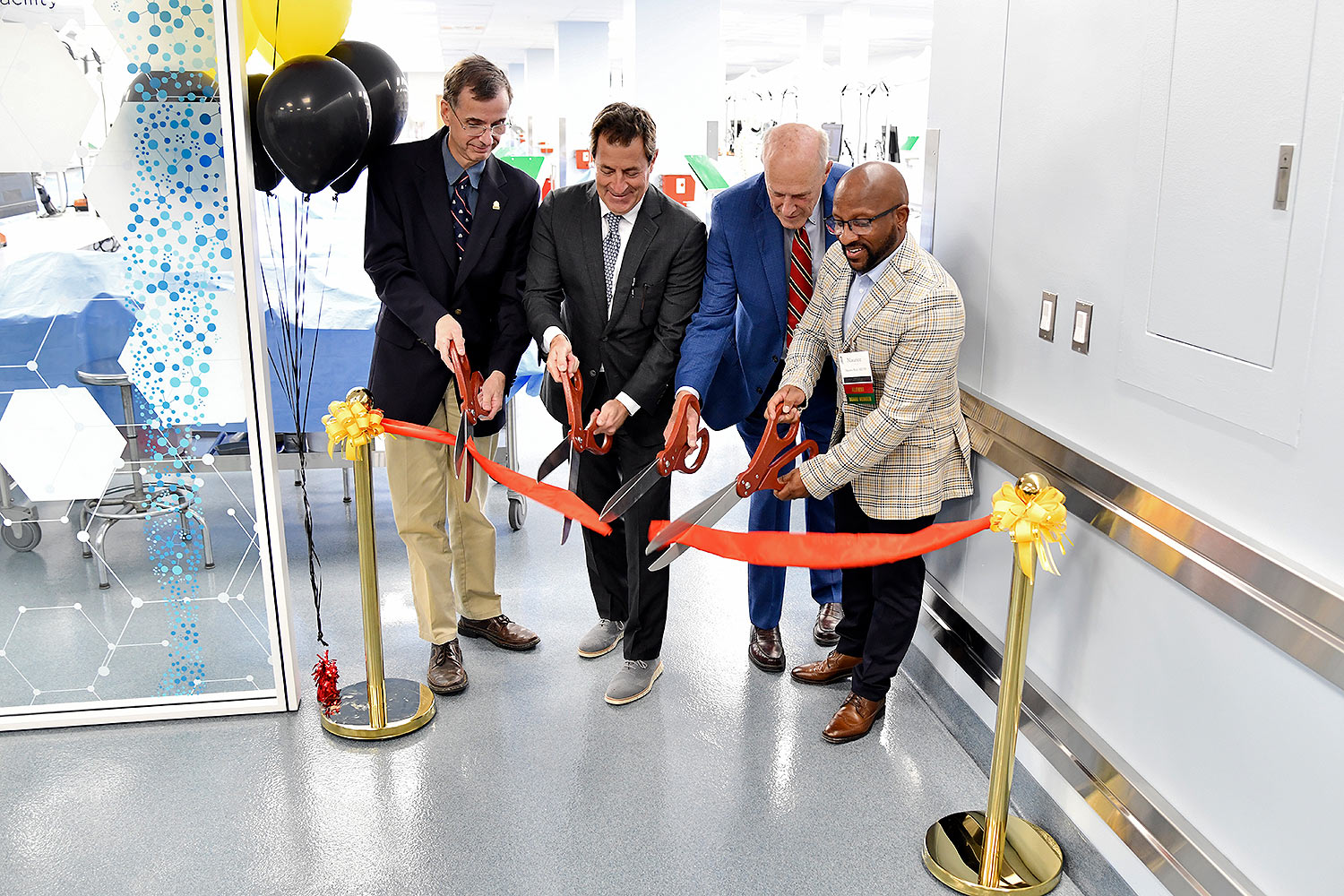October 28, 2024 | Jonathan Kelvey
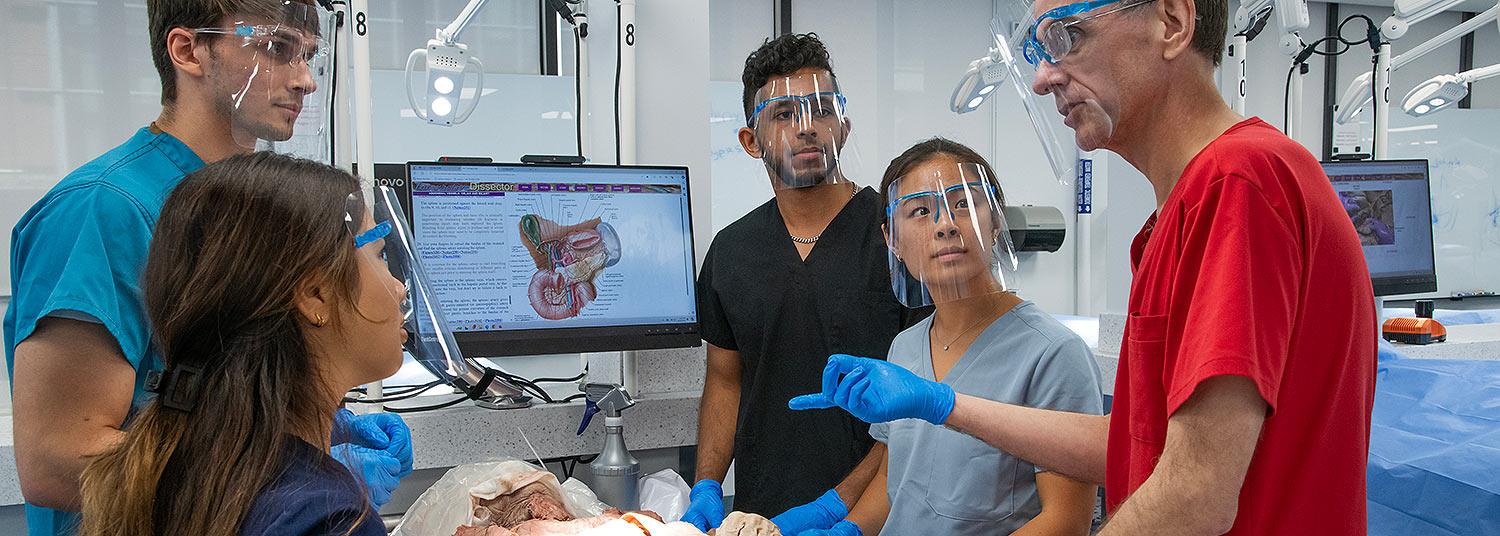
A philanthropic gift from UMSOM alumnus Dr. Maurice N. Reid enabled the first renovation to medical school anatomy lab in 50 years.
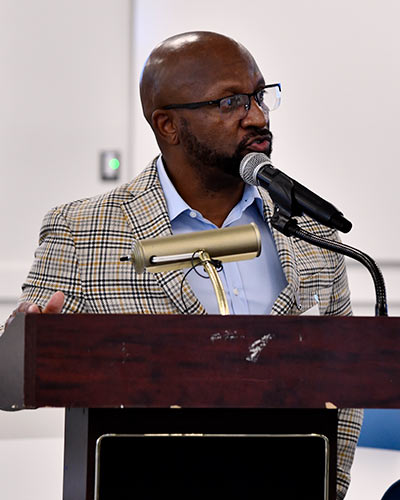 The University of Maryland School of Medicine unveiled at an Oct. 8 ribbon-cutting ceremony the newly renovated Maurice N. Reid, MD ’99 Anatomy Teaching Facility, a state-of-the-art gross anatomy laboratory and learning facility made possible in part by a $1 million donation by UMSOM alum Maurice Reid, MD, a Board of Visitors member and former CEO and medical director of ExpressCare UrgentCare Centers.
The University of Maryland School of Medicine unveiled at an Oct. 8 ribbon-cutting ceremony the newly renovated Maurice N. Reid, MD ’99 Anatomy Teaching Facility, a state-of-the-art gross anatomy laboratory and learning facility made possible in part by a $1 million donation by UMSOM alum Maurice Reid, MD, a Board of Visitors member and former CEO and medical director of ExpressCare UrgentCare Centers.
Located in the Bressler Research Building, the facility features 52 dissection tables with surgical-quality overhead lighting, touch-screen computers, and a reading room for analyzing medical imaging.
“My philanthropy at the School of Medicine is centered around improving students' life on campus and enriching their education by improving facilities,” Dr. Reid said. “Our anatomy lab has exceeded my expectations. It represents a symbol of excellence in medical education and investment in the future of healthcare. I'm excited to witness the facility's impact on future physicians.”
The facility hosts UMSOM medical students throughout their four years of school. It facilitates anatomy training for physician assistants, pathology assistants, physical therapy students, dental students, and other health professionals in multiple UMB schools.
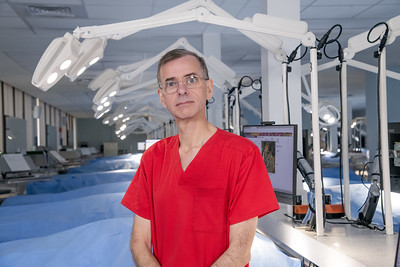 “This facility had not been updated since its construction in 1973, and many physicians and medical students over the last 50 years will recall what might have been charitably called ‘1970s hospital décor’ coupled with 1970s vintage fluorescent lighting, flooring, and other aging infrastructure,” said Adam Puche, PhD, Department of Neurobiology vice chair. “The positive impact the improved quality of this space will have on medical and allied health professional learning at UMB cannot be overstated.”
“This facility had not been updated since its construction in 1973, and many physicians and medical students over the last 50 years will recall what might have been charitably called ‘1970s hospital décor’ coupled with 1970s vintage fluorescent lighting, flooring, and other aging infrastructure,” said Adam Puche, PhD, Department of Neurobiology vice chair. “The positive impact the improved quality of this space will have on medical and allied health professional learning at UMB cannot be overstated.”
UMB President Bruce E. Jarrell, MD, FACS, and UMSOM Dean Mark T. Gladwin, MD, UMB executive vice president for medical affairs and the John Z. and Akiko K. Bowers Distinguished Professor were among the University of Maryland Baltimore staff, faculty, and administrators who attended the event.
“This anatomy lab is part of the DNA of the medical school,” Dean Gladwin said. “The study of anatomy is a rite of passage that introduces physicians to the art and practice of medicine. We can all be proud of this renovated facility, and we owe an incredible debt of gratitude to Maurice Reid and his wife Kelly for their gift.”
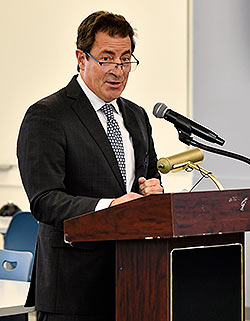 The new facility was specifically designed to cater to the needs of students studying under the new UMSOM Renaissance Curriculum. Launched in August 2020, the curriculum emphasizes teaching normal and abnormal processes simultaneously with clinical context, integrating earlier and more extensive patient interactions, team-based learning, and hyper-realistic simulation training. Using a systems approach, the facility's design allows anatomy studies to interweave through the first two years of training.
The new facility was specifically designed to cater to the needs of students studying under the new UMSOM Renaissance Curriculum. Launched in August 2020, the curriculum emphasizes teaching normal and abnormal processes simultaneously with clinical context, integrating earlier and more extensive patient interactions, team-based learning, and hyper-realistic simulation training. Using a systems approach, the facility's design allows anatomy studies to interweave through the first two years of training.
“Students don’t just learn the gross anatomy of the heart during the anatomy lab,” Dean Gladwin added. “They're learning about the heart physiology, pathophysiology, molecular biology, and biochemistry.”
The May 2024 graduating class was the first cohort of medical students to experience the new curriculum throughout all four years of their education.
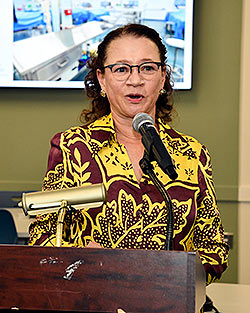 “I have a lot of pride today in what we've been able to accomplish, and so much gratitude for Dr. Reid and his wife Kelly for their amazing gift that allowed for this to happen,” said Donna Parker, MD, UMSOM senior associate dean for undergraduate medical education, who led the Renaissance Curriculum development effort. “The space is truly beautiful. It’s dynamic; it's collaborative; it contains today's cutting-edge technology, and we built it out so we can integrate future technology we can’t even imagine yet.”
“I have a lot of pride today in what we've been able to accomplish, and so much gratitude for Dr. Reid and his wife Kelly for their amazing gift that allowed for this to happen,” said Donna Parker, MD, UMSOM senior associate dean for undergraduate medical education, who led the Renaissance Curriculum development effort. “The space is truly beautiful. It’s dynamic; it's collaborative; it contains today's cutting-edge technology, and we built it out so we can integrate future technology we can’t even imagine yet.”
In addition to modern lighting and radiology imaging stations, the new facility is equipped with 3-D graphics packages and anatomic models for teaching. These resources have been carefully selected and created to mirror the tools and resources students will use in the clinic, providing a realistic learning environment.
 “As much as possible, the student experience here in the lab simulates the experience in the clinic,” Dr. Puche said. “The new surgical lighting is the same as in the OR, and even the reading room uses the same technology they can expect in clinical practice.”
“As much as possible, the student experience here in the lab simulates the experience in the clinic,” Dr. Puche said. “The new surgical lighting is the same as in the OR, and even the reading room uses the same technology they can expect in clinical practice.”
According to Dr. Jarrell, who has long taught abdominal anatomy at UMSOM, the new facility is a step into the 21st century and beyond.
“Before, if I had an X-ray, I would have to bring it with me and look at it through the window,” he said. “I’ve already had the pleasure of teaching in the new facility, and it’s a pleasure to simply pull images up on a screen. I want to thank Dr. Reid for his generous contribution. It is transforming things for our students.”
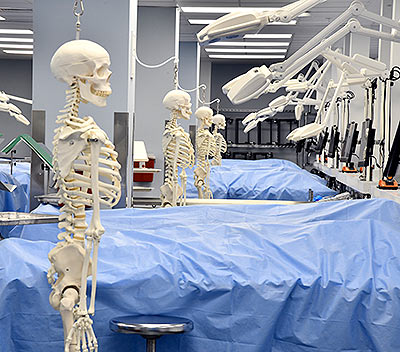 The donation toward the renovation of the anatomy facility is the latest of Dr. Reid’s philanthropic contributions to UMSOM. These include a $500,000 donation in 2019 to support the Maurice N. Reid, MD Collaborative Learning Space and a $300,000 gift in 2021 to fund a pilot cohort for Point of Care Ultrasound training for medical students. He further supported the Dean's Academic Development Fund, the Center for Advanced Training and Innovation, the UMB CURE Scholars Program, and the Medical School Teaching Facility Fund.
The donation toward the renovation of the anatomy facility is the latest of Dr. Reid’s philanthropic contributions to UMSOM. These include a $500,000 donation in 2019 to support the Maurice N. Reid, MD Collaborative Learning Space and a $300,000 gift in 2021 to fund a pilot cohort for Point of Care Ultrasound training for medical students. He further supported the Dean's Academic Development Fund, the Center for Advanced Training and Innovation, the UMB CURE Scholars Program, and the Medical School Teaching Facility Fund.
“Almost 30 years ago, when I first walked the halls as a first-year medical student, I couldn't imagine I would be in this blessed position to give back to the institution that has made such a profound mark on my life,” Dr. Reid said. “The admissions committee at the University School of Medicine saw my potential, and because they gave me a precious slot in the class of 1999, I'm committed to being a blessing to this school.”
View the Anatomy Teaching Facility Image Gallery:
About the University of Maryland School of Medicine
Now in its third century, the University of Maryland School of Medicine was chartered in 1807 as the first public medical school in the United States. It continues today as one of the fastest growing, top-tier biomedical research enterprises in the world -- with 46 academic departments, centers, institutes, and programs, and a faculty of more than 3,000 physicians, scientists, and allied health professionals, including members of the National Academy of Medicine and the National Academy of Sciences, and a distinguished two-time winner of the Albert E. Lasker Award in Medical Research. With an operating budget of more than $1.2 billion, the School of Medicine works closely in partnership with the University of Maryland Medical Center and Medical System to provide research-intensive, academic, and clinically based care for nearly 2 million patients each year. The School of Medicine has more than $500 million in extramural funding, with most of its academic departments highly ranked among all medical schools in the nation in research funding. As one of the seven professional schools that make up the University of Maryland, Baltimore campus, the School of Medicine has a total population of nearly 9,000 faculty and staff, including 2,500 students, trainees, residents, and fellows. The School of Medicine, which ranks as the 8th highest among public medical schools in research productivity (according to the Association of American Medical Colleges profile) is an innovator in translational medicine, with 606 active patents and 52 start-up companies. In the latest U.S. News & World Report ranking of the Best Medical Schools, published in 2023, the UM School of Medicine is ranked #10 among the 92 public medical schools in the U.S., and in the top 16 percent (#32) of all 192 public and private U.S. medical schools. The School of Medicine works locally, nationally, and globally, with research and treatment facilities in 36 countries around the world. Visit medschool.umaryland.edu
Contact
Office of Public Affairs
655 West Baltimore Street
Bressler Research Building 14-002
Baltimore, Maryland 21201-1559
Contact Media Relations
(410) 706-5260

